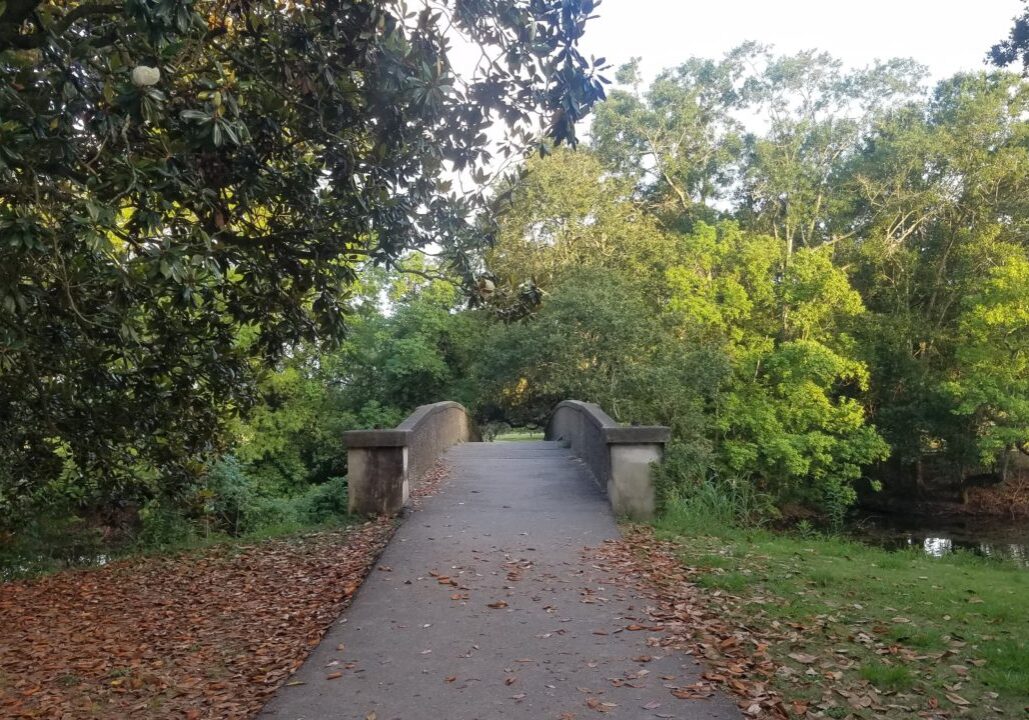If you would, imagine you’re in the New Orleans of 1884. The city hosts the World’s Industrial & Cotton Centennial Exposition in the newly completed Upper City Park (land two years away from being renamed Audubon Park). The Port of New Orleans brings in ships and goods daily from all over the globe. Items people in the city have never seen before pour into shop windows and, if you can pay for them, jewelry from Paris and carved chests from China can be yours.
In the midst of the lavish window displays on Canal Street, a new museum and theater opens. All in all, this isn’t anything strange. Theaters often pop up here. Just this past fall, four have opened already. But this place is different. This place has just as many exotic items as any other shop on Canal, but where those display expensive baubles and gold-headed canes, this one exhibits unbelievable things, impossible things. And you don’t have to be rich to enter here. Here wonder and amazement can be found all for the cost of a dime.
Something They’ve Never Seen
P.T. Barnum invented the dime museum in the 1840s when he opened his American Museum in New York City. Filled with oddities like wax figures and taxidermied creatures, the museum also had a menagerie where visitors were able to see animals like hippopotamuses and giraffes for the first time. The novelty of Barnum’s Museum brought people in by the thousands and the success of the American Museum inspired generations of businesspeople to try their hands in the oddities business as well.
One of those determined to follow in Barnum’s footsteps was Eugene Robinson. Robinson himself is a mysterious figure. He seemingly appears from nowhere and it’s unknown if he was born in the city or moved here to create the first dime museum in New Orleans. Either way, the city was primed for it as it was the only major city in America without one at that point.
That changed in grand fashion when Robinson’s Mammoth Dime Museum and Theatre opened at 10 a.m. on Oct. 30th, 1884 at 126 Canal Street. The occasion was marked by the Great Bangle Day promotion where:
“Every Lady, Every Girl, Every Girl Baby
Visiting the Museum on the Opening Day
will be Provided with a Souvenir One Dime Bangle.”
The opening was noted in the 1884 World’s Industrial & Cotton Centennial Exposition visitor’s guide and the promotion was successful. Overall, the museum proved profitable and popular, not least because of its liberal admittance policy and low price.
Robinson’s was advertised as “The Resort for Ladies and Children” as women were admitted unescorted and unaccompanied children were welcome, provided they had a dime, of course. But what exactly did that 10 cents admission buy?
For starters, Robinson’s was a museum and theater so for one thin dime, visitors were treated to variety and theatrical acts daily, including an all-girl orchestra. From 10 a.m. to 10 p.m. each hour on the hour a new vaudeville act, play, or “jass” band would take the stage. All of this was found on the first floor of the five-story building with four floors of exhibits above to explore at whatever pace patrons wished.
Exhibits included such novelties as dioramas, georamas, cosmoramas, paintings, menageries (private zoos), relics, stuffed animals, & waxworks. There were also exhibitions of people, known as “Freak Shows,” who were displayed as “mistakes and oddities of nature.” Among the performers in Robinson’s show were a living skeleton, the smallest and largest ladies in the world, an elastic-shouldered man, a human mermaid, a man fish, and Lizzie Sturgeon – a prodigy at playing piano with her toes.
There was also an unknown woman performing the Thauma Illusion each night. Taken from the Greek word for magic, the Thauma Illusion originated in Europe and featured a woman’s torso and head floating in midair. The audience could speak with and ask questions of the spector if desired.
As amazing as these acts and exhibits were, not everyone was a fan of the museum and theater. The Mascot, a popular newspaper in New Orleans at the time, reported in November 1890 that from the balcony of Robinson’s, a brass band was always playing so loudly “horses fell in the streets” and “the great minds in the city go wrong.” This was only the start of a particularly savage review of the museum. And the bad news didn’t stop there.
A Real Showboat
Showboats were floating theaters that once worked their way up and down the Mississippi and Ohio Rivers from the 1830s to 1943. These ships of varying quality and size brought culture and entertainment to the river frontiers by providing theater performances, wax museums, and equestrian spectacles for a few weeks at each docking.
Typically made on barges, towboats were used to push the showboat to their landings. The largest of the boats could seat sizable audiences, some over a thousand people. Steam calliopes played loudly to alert settlers the boat was coming until the Civil War stopped river travel. But the 1870s saw a revival of showboats specializing in melodrama and vaudeville sailing again.
The early 1900s began the end of the showboats as roads improved and motion pictures took over. Countering this by attempting to make showboats grander only quickened the process and when burlesque took over the boats in the 1930s, their reputations officially turned them from family-friendly entertainment into something seedier. The Golden Rod was the last showboat to retire from the rivers in 1943.
But rewind a bit to the 1890s when showboats were still quite popular. In 1893, Robinson had his showboat, the Floating Palaces, built to tour the Ohio and Mississippi Rivers. The boat consisted of two large cabins, one on each barge, and featured an opera house and a small museum.
While no doubt grand, the size of the Floating Palaces was part of its downfall. Smaller showboats could dock in the rural areas lining the rivers, but large ones could only stop in cities where they were in direct competition with established, sedentary theaters. In Robinson’s case, not only was he competing with New Orleans’ already numerous theaters, he was in direct competition with his own.
The boats failed spectacularly and bankrupted Robinson. He auctioned the Floating Palaces off in Spring 1894 and the Mammoth Dime Museum and Theatre followed in 1895.
Into the Ether – Robinson Fades Into History
Eugene Robinson, historically, is a man with no past and no future. He disappeared from records after his businesses failed. His date and place of death, just as his place and date of birth, remain unknown. The Historic New Orleans Collection has original broadsides from Robinson’s for any interested in seeing the enigmatic man himself.
Cover Photo courtesy Getty Images

![Canal Street Canal Street, New Orleans, Lousiana', circa 1897. Until the early 1800s, the French Quarter was mainly inhabited by Creoles. After the Louisiana Purchase (1803), a other cultures began to find their way to the city via the Mississippi River. From "A Tour Through the New World America", by Prof. Geo. R. Cromwell. [C. N. Greig & Co., London, circa 1897]. Artist Unknown. (Photo by The Print Collector/Getty Images)](https://www.verylocal.com/wp-content/uploads/2022/01/GettyImages-1151164814.jpeg)






